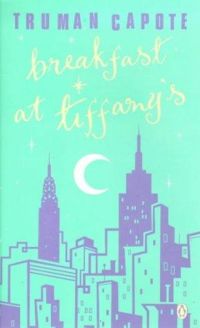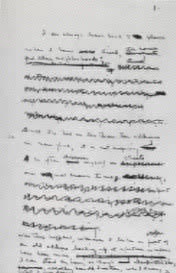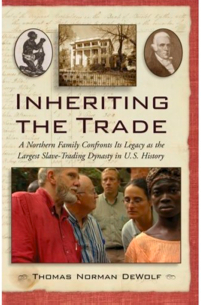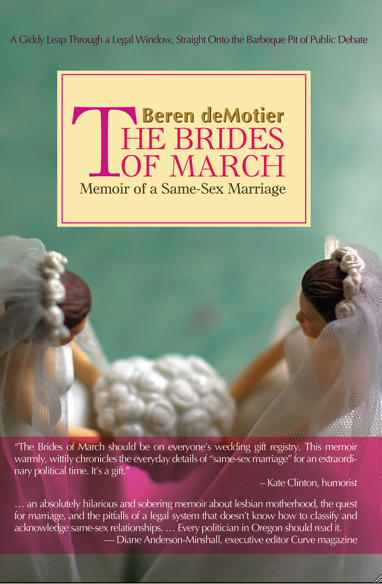At long last, a light at the end of the tunnel: this will be the last set of generalized advice on incorporating written feedback, at least for the nonce; since I’ve gotten you all thinking about revision, I’m eager to get back to some hands-on self-editing tips.
Has this series seemed kind of, well, dark? Having plowed through it, I certainly have a better understanding of why so few writing gurus seem to tackle it — since everyone’s level of sensitivity is different, it’s genuinely hard to give advice that’s going to be helpful to most, let alone everyone.
And yet, interestingly, writers tend to speak the same way about suggested revisions, regardless of the actual level or intensity of the feedback: at first, it’s all pretty outrageous and unreasonable, right? Just as the querier frustrated after sending out five queries vents in more or less the same terms as the querier frustrated after a hundred, rendering it difficult for the listener to understand the situation without follow-up questioning, writers faced with all kinds of change requests often express their feelings about them in the same terms.
Why is that potentially problematic? Well, it complicates the professional lives of those of us who help writers incorporate such changes, for one thing, and for another, it renders critique groups less able to support their members through revisions. It even makes it hard for writer friends to sympathize with one another.
If you doubt that last part, at your next literary conference, try eavesdropping on conversations amongst the agented. I can virtually guarantee you that in any group of five agented writers actively marketing their work, at least two of them will be quite happy to complain to their buddies about the ASTONISHING things their agents or editors have recently asked them to do to their manuscripts — a quandary that, let’s face it, most agent-seeking writers would gladly giver their toes to have.
Of course, the primary negative effect of this phenomenon is that old bugbear we’ve kept seeing crop up throughout this entire series: over the years, it has given the fine folks in the publishing industry the impression that writers as a group are simply unwilling to alter the ways they arrange words at all.
Which can make even the most reasonable author-initiated discussion about suggested changes sound at best like negotiation and at worst like whining.
Sorry about that. I just report the news; I don’t create it. Unfortunately, most writers new to the biz are entirely unaware of this stigma.
I believe it’s only fair to tell writers up front about our collective reputation for being, um, resistant to feedback, if only so they will learn to become strategic in venting. For a writer become known as an exception, s/he has to be ostentatiously reasonable and cheerful about revision requests.
In that spirit, let’s take a fond last gander at the strategies we’ve been learning to incorporate feedback in a way that defies expectations:
1. Don’t argue about the feedback with the feedback-giver.
2. Read, reread — and get a second opinion.
3. Don’t decide right away how you’re going to handle the critique — or how you’re going to apply its suggestions to your work.
4. Remember that you and the critiquer are on the same side. Even when it doesn’t feel like it.
5. Don’t use an industry professional as the first — or only — reader of your manuscript.
6. Don’t expect your readers to drop everything to read your work. Especially if they happen to work in or with the publishing industry.
7. Don’t try to do it all at once.
8. Make a battle plan, setting out reasonable deadlines for each step.
9. Allow some room in your battle plan –and time in your schedule — to respond to inspiration, as well as to experiment.
10. Make sure that you’re not over-estimating the critiquer is requesting.
11. When in doubt about what a critiquer expects you to do, ASK.
12. Avoid making the same mistake twice — at least for the same feedback-giver.
13. Keep excellent records about what you have done to the manuscript — and keep both hard and soft copies of EVERY major version of the book.
I fully realize that collectively, or even individually, this is a tough group of guidelines to follow with a smile, particularly on a tight deadline — or, as so often happens these days to newly-agented writers, when the agent keeps demanding changes to that manuscript that s/he praised as remarkable when s/he first read it. Ten years ago, it was relatively rare for an agent to get heavily involved in pre-circulation editing, but now that the market is so very tight in most fiction categories, the practice has exploded.
Much to the chagrin of the writers concerned, naturally…which leads me to my next strategy:
14. Vent to other sources early and often — preferably including at least a handful who have been in your situation.
Does this seem like a contradiction of Strategy #1? Actually, these tips work remarkably well together — and the farther a manuscript is along the road to publication, the more these two practices bolster each other.
Naturally, receiving critique — particularly of the notoriously blunt kind favored by the time-pressed industry — is going to generate some pretty intense feelings, but as I’ve been pointing out throughout this series, the feedback-giver is the LAST person at whom the writer should be venting.
If the writer plans on continuing to have a working relationship with the critiquer, at any rate.
Yet as we have seen with some of our exemplars, bottling up those feelings doesn’t necessarily assist either the writer or the revision process. So to whom should a writer vent?
Remember my GETTING GOOD FEEDBACK series (easily accessible in the category list at right, in case you’re interested), where I suggested that your nearest and dearest — personal friends, coworkers, family members, and anyone who has ever shared your bed, however briefly — do not make the best first readers for a manuscript? Well, it turns out that they are perfectly delightful at acting as sounding boards for writerly angst.
Before you begin breathing fire, however, I would suggest that you lay down one ground rule — and the closer you are emotionally to your sounding board, the more important it is that you establish it. Preface your venting with something along the lines of, “Honey, I value your opinion, and I really appreciate that you’re willing to let me unload about this. However, to make this easier on both of us, I want to make it clear that I am not asking for advice on how to handle this situation — I just need to talk about it.”
Why take this reasonable precaution? Because the world of writing and publishing is downright opaque to those not involved with it, my friends. The more a non-writer hears about how a critique group operates (“What do you mean, you sit around and tear one another’s writing to pieces?”), how the writer and the agent seldom share an opinion on when a manuscript is ready to market (“Wait — doesn’t your agent work for YOU? Why would the timing on submitting your book to editors be his call?”), how much control the editor and publishing house have over the final book (“It’s your book — why don’t you just say no?”), and how much of the burden of promotion now falls on the author (“I always thought that authors were paid to go on book tours.”), the more incredible it seems.
In my experience, mid-revision is not the best time to hear, “Why are you doing this to yourself?”
So to whom do you turn for advice? Ideally, writers who have trodden this path before you — or at any rate writers, who will at least understand the power relationships between authors and the various parts of the industry.
I’ve said it before, and I’ll doubtless say it again: writing is an isolating avocation, and simply not knowing whether one’s own situation is normal can generate a fair amount of stress. In a requested revision situation, this is especially true.
So believe me when I tell you: while you are struggling to incorporate a whole raft of suggested changes is NOT the time to bury yourself in your burrow.
Work time into your revision schedule to talk to other writers, either in person or online, on a regular basis. Think of it as mental health insurance. Vent your frustrations; get some sense of being a part of a community of people under similar pressures.
A fringe benefit to reaching out at the point when most writers withdraw: the writer friends willing to hold your hand through a revision are almost always the ones who end up making the best promoters for your book after it is published. These are the folks who don’t mind calling up bookstores and asking if they carry your novel, or turning your book face-out on the shelf, so it’s more likely to be picked up by a browser, or even carrying your memoir around Barnes & Noble for a while, then placing it conspicuously on one of the bestseller tables.
Bless ‘em.
15. Don’t confuse resentment over being asked to revise the manuscript at all with disliking the content of the revision request.
We dealt with various stripes of this one in the first part of this series, on taking verbal feedback well, but it bears repeating here: a writer’s emotions tend to run high in the wake of any text-based feedback other than, “Wow, this is the best novel about lust since TOM JONES.”
Normal and natural, of course. And of course, it’s normal and natural to want to ask the critiquer who has the gall to tell you differently, in ways as subtle as pointing out misused semicolons or as broad as advising you to rearrange the running order of the plot, who the heck s/he thinks s/he is.
I’ve already expended quite a lot of blog space on why precisely voicing that natural impulse would not be good for your writing career. Right now, though, I want to turn the question on its head and ask those of you in the throes of critique shock a fundamental question:
If you’re really, really honest with yourself, how much of your reaction to the feedback is actually a response to your feelings being hurt?
As unpleasant as such self-scrutiny may be to face, this is a crucial question to keep asking constantly throughout the revision process, especially if some of the feedback strikes you as completely off the mark. On days when the answer is above 50%, consider leaving the manuscript alone that day.
I’m not just suggesting this as a means of giving those emotions time to cool, either — resolving to keep a weather eye on how you’re feeling toward the revision is a means of granting yourself permission for those feelings to fluctuate.
And trust me, they will.
16. Remember, no-holds-barred critique is the industry’s unique way of complimenting talent.
Strange but true.
These days, if an agent or editor doesn’t think a manuscript has publication potential, she will generally get it off her desk so fast it doesn’t even leave a dent on the piles of papers already on her desk. But if a pro likes those pages enough to want to see them make it into print, she’s not going to waste a gifted writer’s time by sugar-coating her opinions on what could be improved.
As much as the writer might prefer that she would.
You’d think, wouldn’t you, that this practice would apply exclusively to professional feedback? I’m here to tell you, though, that many of us who have been mucking about in the trenches for a good long time tend to absorb this attitude, apparently by osmosis.
In fact, I would go so far as to posit this as an axiom: the longer someone’s been in the biz, the less likely s/he is to waste valuable critique time on a manuscript that doesn’t reveal genuine talent and carry a strong probability of publication success.
Remember, TIME is one of the most valuable commodities in the publishing industry — an easy thing to forget from our end of the biz, as writers are routinely expected to invest vast quantities of time and effort gratis toward the creation and promotion of a book.
But when someone who is in the habit of reading half a page of a submission before rejecting it — and does so 700 times per week — takes the time to read your work closely enough to come up with specific ways to improve it, that’s a compliment. As is thinking of the writer who produced the manuscript as enough of a pro to understand the value of such a donation of time.
I like to think of this kind of scrutiny in terms of stage lighting. The literary market is a three-ring circus, with masses going on at any given moment. While much of the action is potentially interesting, the professional reader — or one who’s been kicking around the industry long enough to be — has only one spotlight at his command with which to follow the action.
(Stop chortling; you’re going to scare the elephants. This analogy is going to make sense in a second.)
He can focus that spotlight on only one small part of the big top at a time, right? So he swirls it around the rings, trying to get a sense of what’s there. Out of the cast of thousands, he finds a solitary performer who interests him deeply: he captures a tightrope walker in his light for a full minute before moving on.
In the glare of his scrutiny, of course, quite a bit of the glamour of tightrope walking evaporates. The super-bright light reveals where sequins have fallen off the costume, where dust has gathered on tights, arm gestures that could be better executed, and so forth.
For the tightrope walker, that minute is going to be darned uncomfortable, unavoidably — the bright intensity of a spotlight can be pretty blinding. Her costume might seem a bit shabbier under that glare than it did under shadier conditions.
She could, of course, just live in fear of that spotlight’s ever falling upon her again. Or, if she sewed on the extra sequins that the light revealed were necessary, practiced her arm swoops until they were perfect, and dusted from her knees the residua from previous falls, she might become a star.
Which would mean, essentially, doing her act CONSTANTLY under a spotlight.
And that, my friends, is why the pros are often a bit mystified by the intensity of writers’ reactions to straight-to-the-point feedback; they’re assuming that a talented tightrope walker WANTS to perform under a constant spotlight.
Anyway, at what point would a reasonable person prefer to be told that she needs to tack on a few more sequins, when there’s still time to make improvements — or when the reviewers show up?
Bears a bit of thought, I think. Keep up the good work!















